Have you ever dreamed of going on a gorilla trekking safari in Uganda? I’m thrilled to share my experience and inspire you to explore the wonders of this exciting destination.
Mabamba Swamps & My Dream Shoebill Experience
I chose to arrive a couple of days early to fulfill my dream of seeing a shoebill, a bird that has been on my bucket list for quite some time. It’s truly awesome, with its large and prehistoric appearance. Shoebills can be found in a few places in Africa, but the easiest and most accessible option is a day trip from Entebbe. This adventure involves a short drive from the airport, followed by a boat ride on Lake Victoria and then a smaller, more maneuverable boat through the canals of Mabamba Swamps.
I went on this excursion two days in a row to ensure I didn’t miss out on seeing a shoebill. On the first day, it took some time to locate one—a male. The second day was much simpler. We had heard that a mother recently gave birth to a baby, but tourists were not allowed in that area until the baby had grown a bit. That second day marked the first opportunity to view the baby, and it was a delightful sight! Both the mother and the baby were incredibly cute, and since we knew their location, we didn’t even have to search for them.
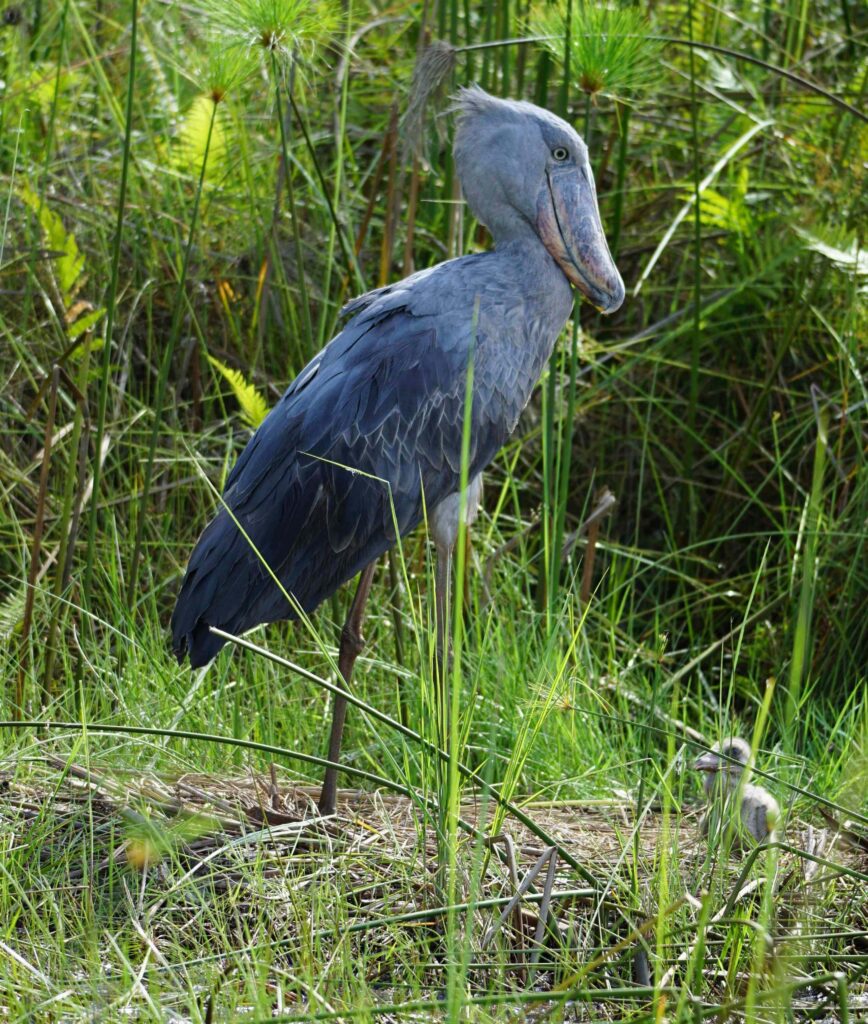
Our group tour began in Kampala, a bustling city with chaotic traffic. To be honest, if you’re short on time, you might want to skip it and head on safari straight from Entebbe. However, we did manage to visit a local school partnered with our tour operator, and had a tour of the city. Plus, I absolutely loved our hotel, Latitude 0. It’s got amazing views and tons of style—a real gem of a boutique hotel. The food and cocktails there were also quite impressive!
Visiting Kibale, “The Primate Capital of the World”
Kibale Forest National Park is renowned for some of Uganda’s finest chimpanzee tracking experiences. Alongside chimps, the park is home to red-tailed, vervet, red colobus, black-and-white colobus, grey-cheeked mangabey, and olive baboons. With over 300 bird species, including four unique to the park, it’s a haven for birders.
While gorilla trekking safari often steals the spotlight in Uganda, do not overlook the opportunity for an encounter with chimpanzees! More closely related to humans than any other living creature, chimps are captivating to watch as they swing from the fruiting trees in the depths of the forest. They are also super noisy and expressive! You have to follow the chimps as they move through the forest (sometimes too quickly!), and the whole experience, from briefing by the rangers to the return to the base, usually takes about 3-4 hours.
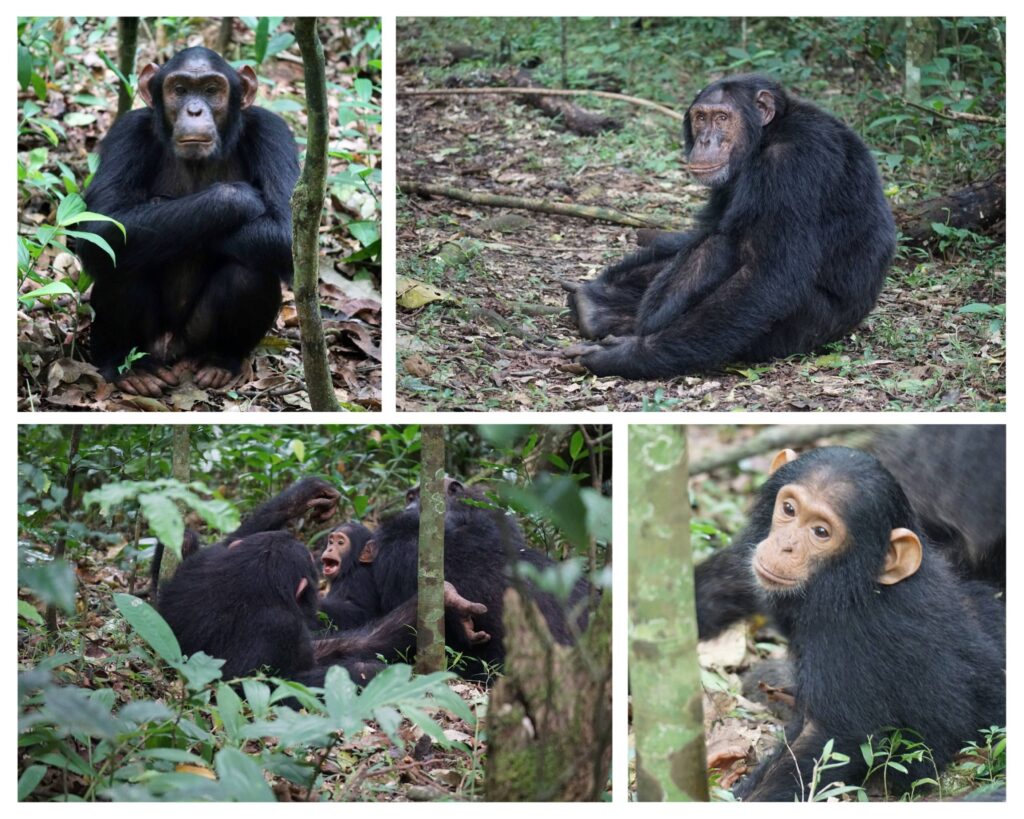
Queen Elizabeth National Park: A Classic Safari Experience
Next up, we headed to Queen Elizabeth National Park for a classic safari experience on the open savanna plains. While Uganda is famous for gorillas and other primates, it’s worth noting that it’s a big country with the Big 5 too. Although there are no rhinos in Queen Elizabeth NP, you can find them in other parts of Uganda.
Highlights of Queen Elizabeth NP include thrilling boat safaris on the Kazinga Channel (where you’ll see tons of elephants, crocs, buffaloes, hippos, and amazing birds) and the chance to spot tree-climbing lions in the Ishasha Plains. The park is home to about 95 mammal species, the most in any Ugandan national park, and approximately 600 bird species, vying for the highest count in Africa.
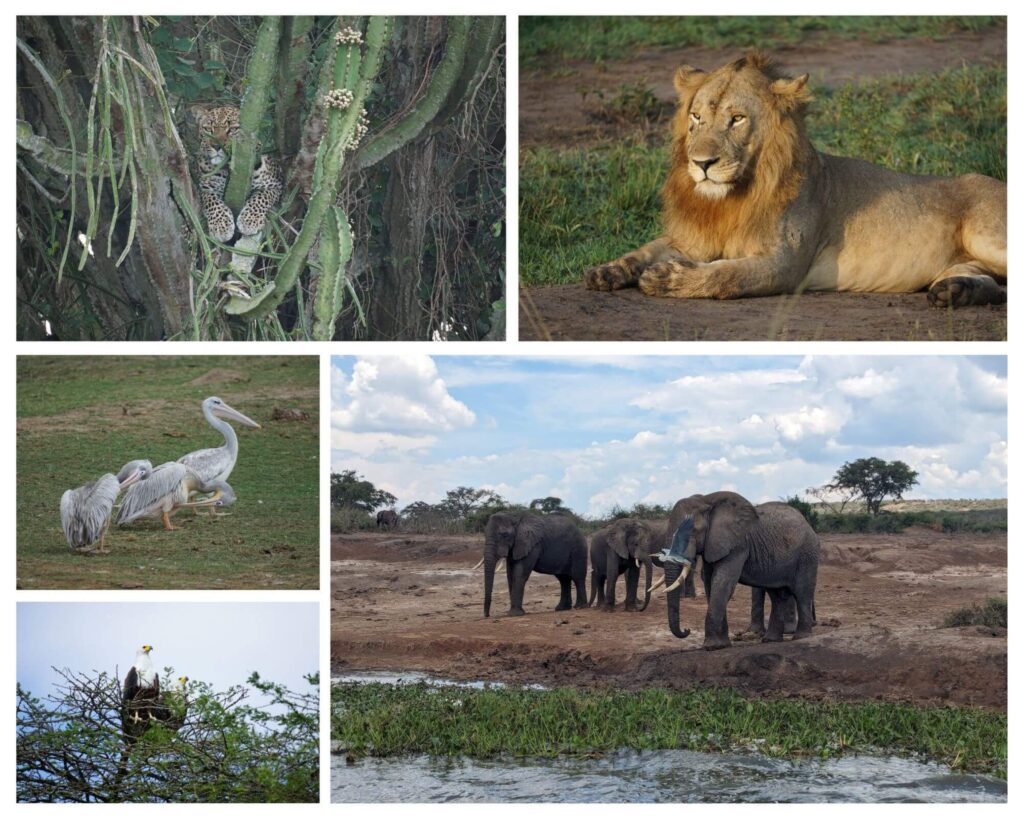
My First Pangolin!
Then we headed to Bwindi National Park. But there was another surprise on the way! Our host arranged for us to visit the Pangolin Rescue Centre! Like the shoebill, this creature had been on my bucket list for a while.
It was fascinating to learn about the rescue centre’s efforts to save pangolins and educate villagers, who often mistake them for snakes or are unaware of what they are.
As many of you may know, pangolins are in high demand in certain Asian countries due to their scales, making them one of the world’s most trafficked animals. The centre employs reformed poachers, teaching them other skills that can help them support their families, from farming to fishing, and more.
Here is an INTERVIEW with the founder of the centre by BBC Newsday if you’d like to learn more about his work.
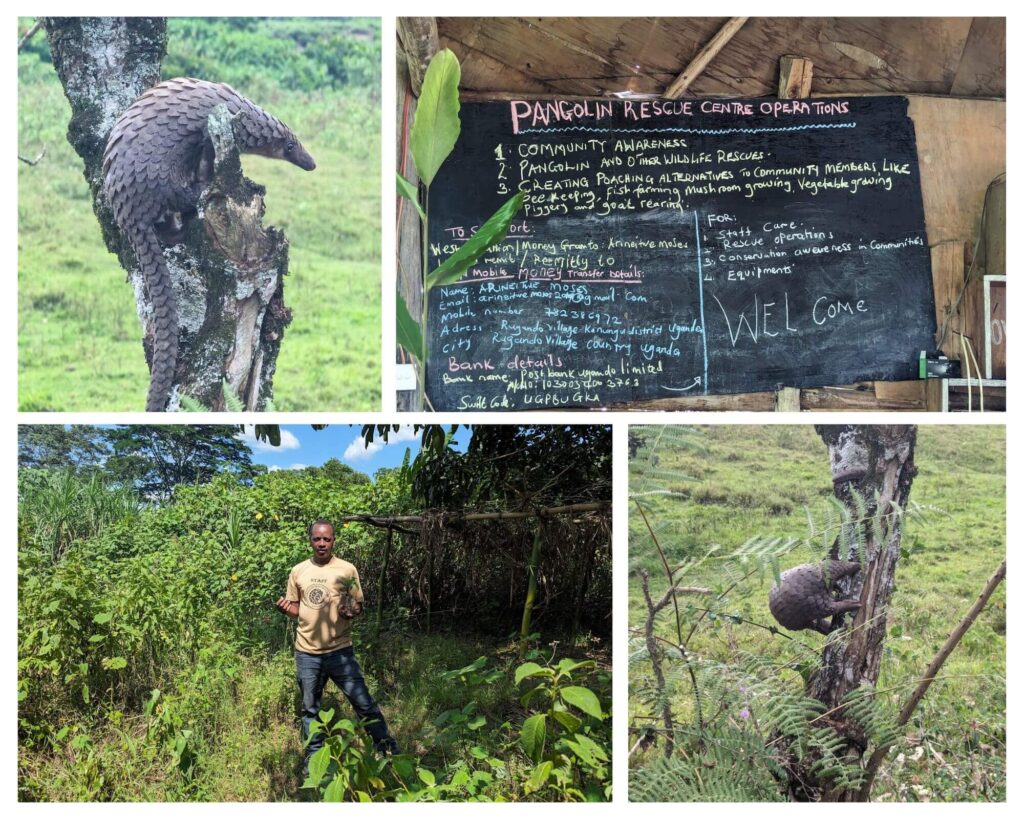
Gorilla Trekking: Bwindi Impenetrable National Park
Now, the “stars of the show”, the mountain gorillas, the main reason most travel to Uganda; I’ll be honest, I was a bit nervous about the gorilla trekking safari itself. I had heard from everyone who had trekked them how challenging these treks could be. In fact, “Bwindi” means “impenetrable” in a local language, so the park’s name translates to “Impenetrable Impenetrable” — because saying it once just isn’t enough! There are different trek options available, but even the easier ones can be quite tough. So, yeah, I was a little freaked out.
The tricky part is that when you first head out, it’s not always known exactly where the gorilla family you are tracking is located. Usually, the rangers go out early in the morning to find them, but sometimes it takes longer. They generally have a good idea of the area they’ll be in, but not the exact spot. We only found out where the family was when we were about 15 minutes away from them. We were quite lucky though; our trek was only about an hour out and an hour back (after a 45-minute drive each way to start the trek), and the terrain was relatively easy — just a normal hike, no mountain climbing involved.
Our family was Habinyanja, one of the earliest habituated gorilla families in Uganda, dating back to the late ’90s. There are currently 12 gorillas in the family, including a 4-month-old baby — so adorable! To wrap up the encounter, I even got peed on by a gorilla that was up in a tree.
Gorilla Trekking Advice
While my experience wasn’t super challenging, as I mentioned earlier, you can never predict. For those wanting to see the gorillas, my advice is not to wait until you’re older or have any physical issues. However, if needed, they do offer a stretcher “service” which some people do have to use occasionally.
Another piece of advice is to hire a porter. They only cost $20 (plus a tip), and it’s a great way to support the local community. These porters only get one chance per month to be hired, and for many of them, that $20 means being able to feed their family. Plus, it helps protect the gorillas; when locals make money from them, they’re more motivated to protect them.
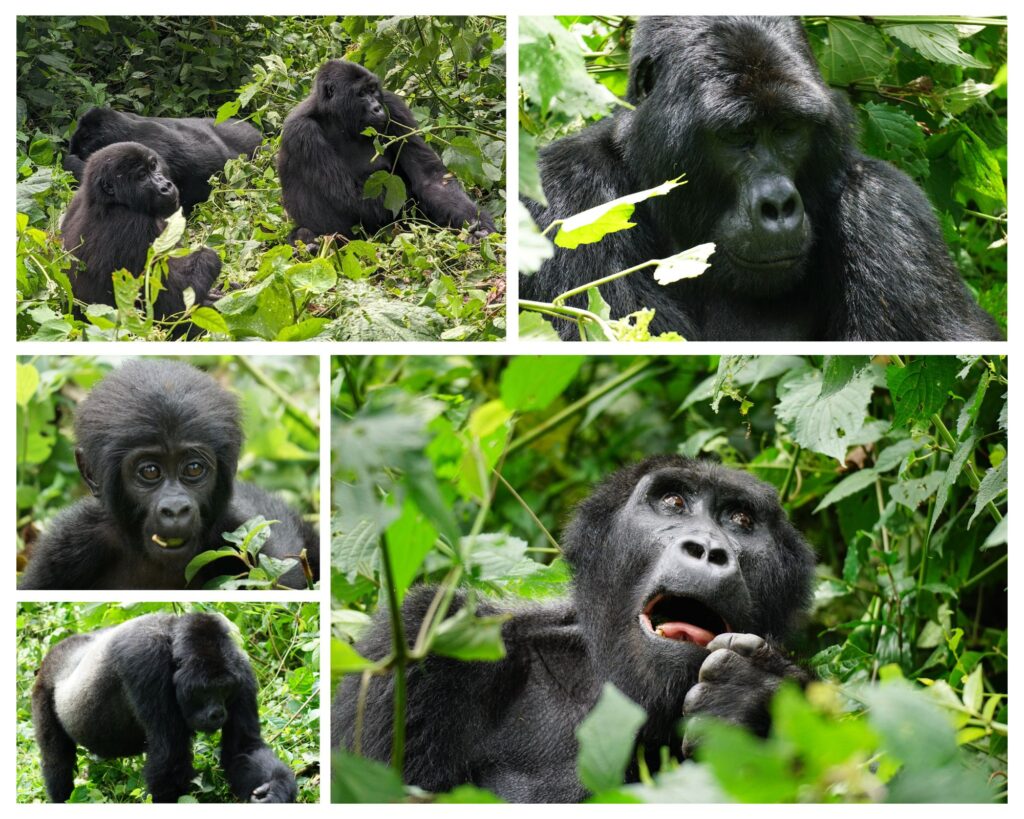
Safari in Uganda: It’s a Wrap!
What sets Uganda apart from other safari destinations I’ve visited is its rich cultural aspect and the close connection between human communities and wildlife. For travelers seeking both safari adventures and cultural immersion, Uganda would be high on my recommendation list.
Plus, the scenery is simply breathtaking. With its mountainous terrain, volcanoes, lakes, and tea and coffee plantations, Uganda offers incredible views at every turn.
Although you can fly between destinations, there’s could still quite a bit of driving involved, on bumpy roads. It’s reminiscent of Tanzania in this regard. While it can be tiring, the journey is also fascinating as you pass through local villages and witness daily life.
If you’re considering a gorilla trekking safari in Uganda, don’t hesitate to get in touch!
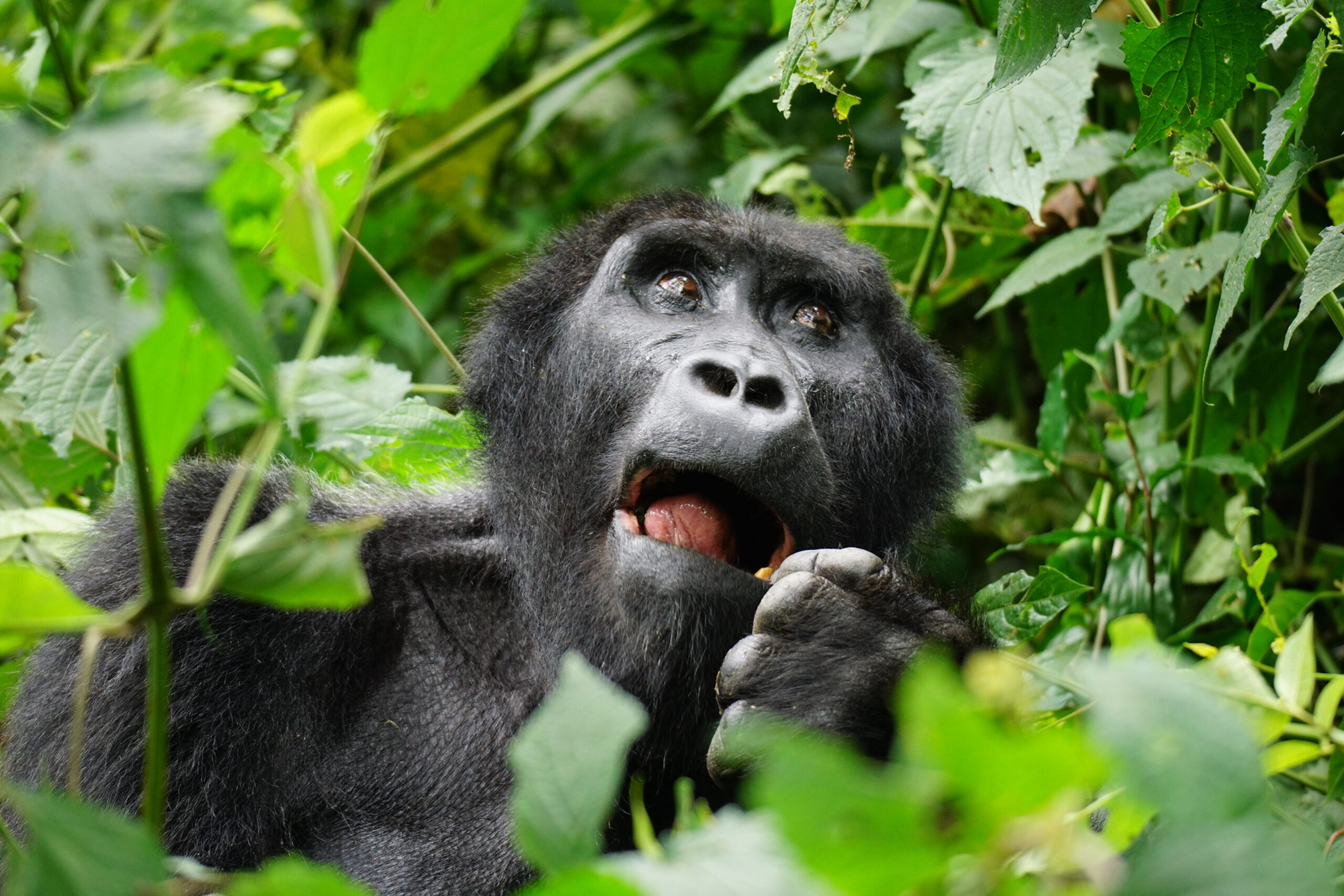
SHARE